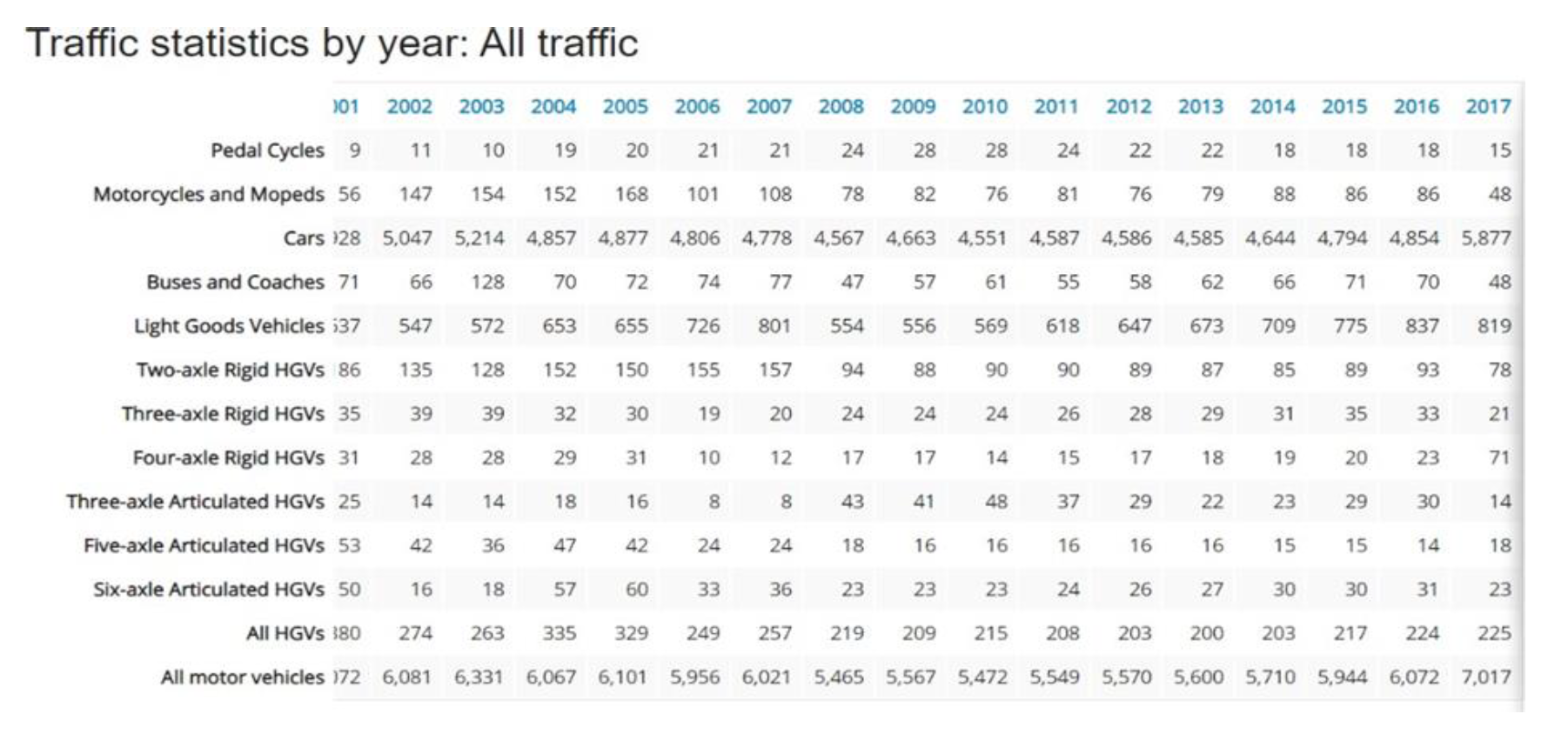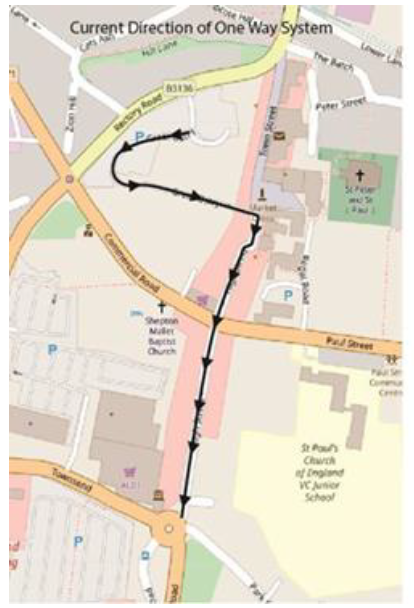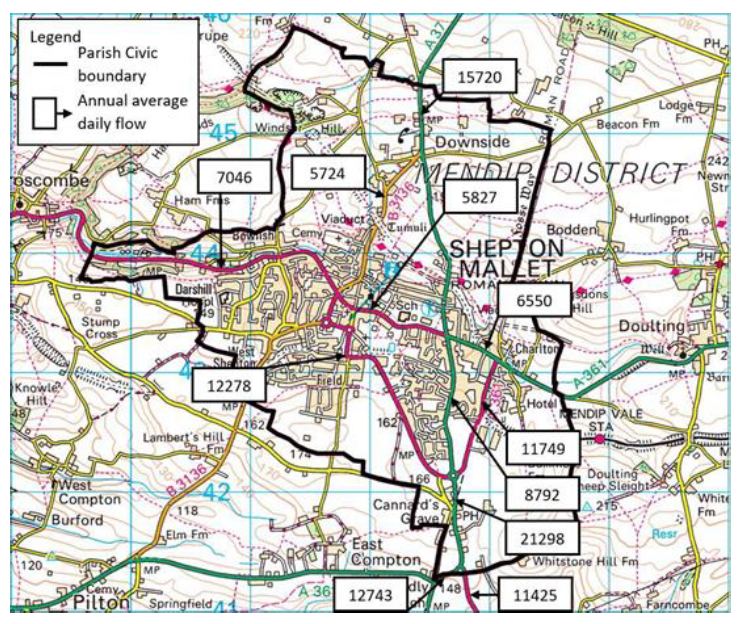Assessment of the Reasoning for Community Aspiration One
1) The most recent census data (2011) for Shepton Mallet found that 83.6% of households had at least one car (or van) – with the remaining 16.4% of households not owning a car (or van)
2) Daily Annual Average Traffic (AADT) flows on the main roads in and around the town are shown on Fig TP14A below. The busiest local road is the A37 to the east, south of the A371 junction with flows of a 21,300 vpd. The A371 in the town has flows of about 12,300 vpd just south of the memorial junction. The A361 near the High Street has a flow of about 5,800 vpd.
3) The A31 traffic flows are summarised in table TP14B below which shows a typical growth in traffic from 6,100 vehicles per day to 7,000 vpd between 2002 and 2017. This represents a growth of 15% over 15 years.
4) These flows are not untypical of small towns. However, the A371 has a high volume of flow and much of it is through traffic which is impacting environmentally on adjacent land uses. Through traffic is also more likely to be travelling at speed with little interest in the town. However, some of this traffic is composed of visitors and tourists who provide an opportunity to be attracted to slow, stop and spend in the town.
 TP14B Traffic Growth 2001-2017
TP14B Traffic Growth 2001-2017
5) Traffic routes are generally two-way single carriageway roads. Management of traffic takes place in three main ways.
6) The one-way system as shown on Figure. Currently this is southbound only between Rectory Road, the High Street and Townsend Road.
7) Restricted vehicle types, notably a 7.5t ban on the A361 between the A371 and A37.
8) Restrictions to traffic speeds, with much of the town at 30mph and parts of the town centre as 20mph.
9) There would be advantages in reversing the direction of the one- way system as shown on Fig xxx below. The advantages are:
- More drivers potentially using the northern town centre area would drive through on their way to park and so help to increase trade to that area.
- Visitors / tourists would more easily find the High Street and especially the upper High Street area. Nearly all visitors will travel through the Memorial junction, so if a sign from here directs to the town centre, then it would be a much simpler and a more pleasant access route than the existing off Rectory Road and its car parks. The northbound route would also allow drivers to pass some free 30-minute maximum stay parking spaces which would encourage them to stop and browse.
10) The Great Ostry access changes need detailed investigation to clarify the options and this Aspiration is intended to place Developer Contribution into both a consideration and delivery of these options
11) The A361/High St junction requires redesigning anyway, due to the accident record and this aspiration will provide an opportunity to do so.
|
|
|
 |
 |
|
|
Fig: annual average traffic flow |
Fig: current direction of one-way |
Fig: proposed direction of one-way |

